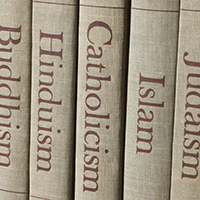 Dr Gaetano Pentassuglia is a Reader in International Law and Human Rights at the University of Liverpool’s School of Law
Dr Gaetano Pentassuglia is a Reader in International Law and Human Rights at the University of Liverpool’s School of Law
“How should cultural or religious factors affect the way in which we work within and across societies?
This is too big a question for anyone to be able to provide anything other than models, empirical evidence or pointers that are tailored to time and space. But a stream of recent media headlines raises the issue in ways that expose at least specific cross-cutting tensions between cultural claims and the rights of individuals or entire groups.
Consider the attacks on religious minorities, including the rising intolerance of Christians from Nigeria to Pakistan; the practice of female genital mutilation (FGM) within certain cultural communities in the Middle East, Asia, and Africa and in diaspora groups; the child sexual abuse cases in Ireland and within the Catholic Church more broadly, tentatively explained (not defended) by some sort of historical and religious exceptionalism; the legal ‘crackdown’ on books deemed offensive to Hindus and Muslims in India; or the debate over male circumcision on religious grounds in Germany.
How do these seemingly disparate events interface with one another, if at all?
Cultural claims: shields or swords?
Well, they all speak, in very different ways and very different settings, to the broad narrative of culture as a basis for supporting or challenging cultural claims. The violence against Christians by Muslim extremists in Syria, Iraq or Egypt, or the violence against Muslims committed by Buddhists in Burma or Hindu nationalists in India, exposes a dangerous two-way street of hostility and hatred unleashed in the name of religion. Those communities that endorse FGM do so, again, in the name of their culture.
The Irish Supreme Court’s dismissal of liability claims relating to child abuse in Catholic-run primary schools over the past decade was based on the specificity of Irish history and the Catholic Church’s special status in Ireland.
The hotly debated question of male circumcision by mainly Jewish and Muslim communities as part of their fundamental religious duties, culminated in the passing of a law by the German Bundesrat last December that regulates the matter, has rekindled the debate in that context over the parameters of cultural practices.
With cultural arguments being used as shields or swords depending on the case, there is always a risk of swinging discussions too far the other way – from uncompromising culture-blind visions of secular societies to generalised challenges to minority cultures, to empirically questionable notions of ‘martyrdom’ suffered by one group at the hands of another. Not to mention the lessons of history, such as the early Western imperial interventionism ostensibly for the sake of Christianity (a military pattern sadly echoed by unfolding events involving the predominantly Russian-speaking Crimea).
A human rights perspective
From a human rights perspective, the problem is definitely not with culture, but with what you do with it. You cannot kill or harass in the name of it. You cannot permanently and severely injure women’s bodies in the name of it. You cannot condone physical abuse in the name of it, whatever the context within which it took place. You cannot brand the penal code to encroach on freedom of speech that falls short of incitement to violence, racial or religious hatred, or other strictly construed compelling public interests. You cannot keep religious rights wholly unchecked if the physical integrity of individuals is at stake.
But the language of human rights is not just about banning or prohibiting; it is also about actively engaging with cultural claims by enabling conversations within and outside communities over how things should be done. Tellingly, a 2012 German court decision controversially characterised male circumcision on religious grounds as ‘inflicting bodily harm’, but the debate that followed within German society and in Parliament strove to strike a balance between the rights of Jewish and Muslim boys and the religious rights of their parents and their communities as a whole. The current legislation allows specially trained members of the community to perform the procedure only within the first six months of the boy’s life, after which it can only be performed by a doctor. Later judicial practice has additionally required doctors and parents to inform the child about the procedure ‘in a manner appropriate to his age and development’.
The landmark 2012 UN General Assembly Resolution on the elimination of female genital mutilations, calls, among other things, for ‘a comprehensive, culturally sensitive, systematic approach that incorporates a social perspective and is based on human rights and gender-equality principles in providing education and training to families, local community leaders and members of all professions relevant to the protection and empowerment of women and girls in order to increase awareness of and commitment to the elimination of female genital mutilations’ (para. 10).
In short, participation and empowerment within and outside communities (e.g. through education) should be seen as vitally important to a human rights-based strategy that, apart from the criminalisation of individual behaviour, is also capable of enabling debate and contestation within the group about what is in the collective interest, whether dominant readings of religious duties are correct, and how to ultimately generate a revised understanding of acceptable cultural practices.
Disentangling the non-negotiable core from the fluid contours of cultural claims is what makes a human rights take on cultural arguments a perennial quest for reconciling the non-derogable rights of individuals with the entitlements of groups as the expression of an evolving (non-essentiliased) set of identities.”
